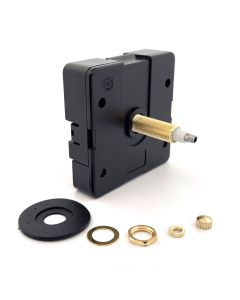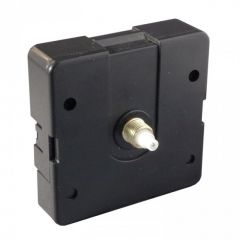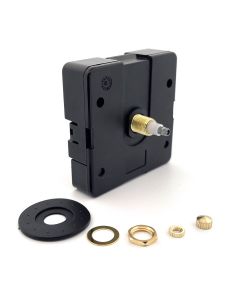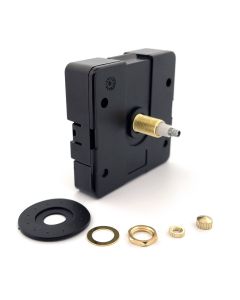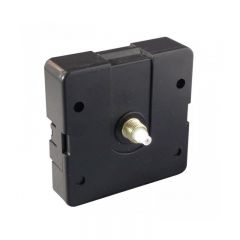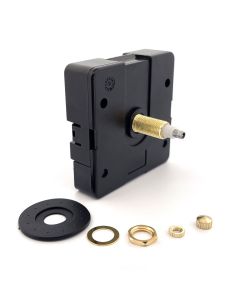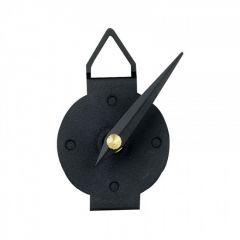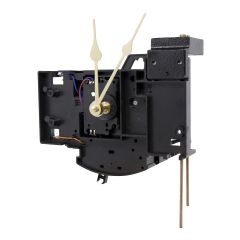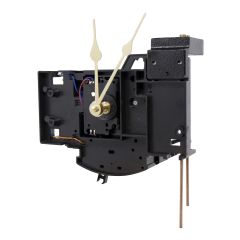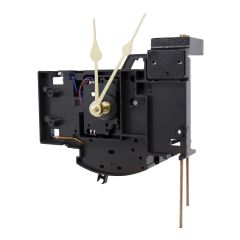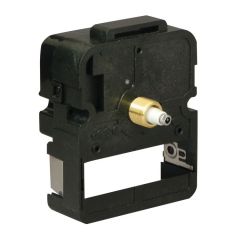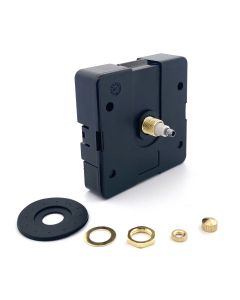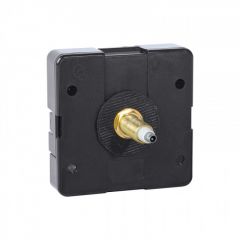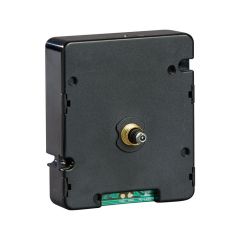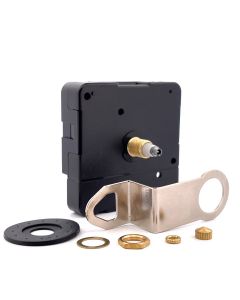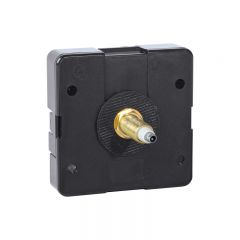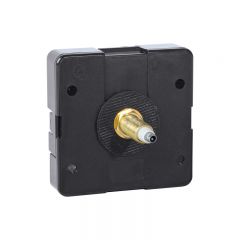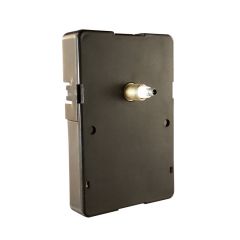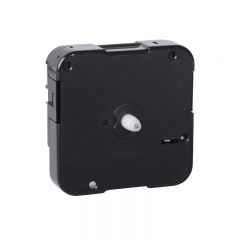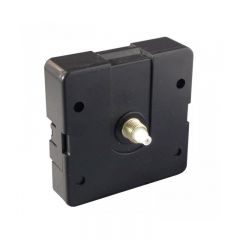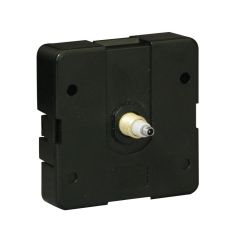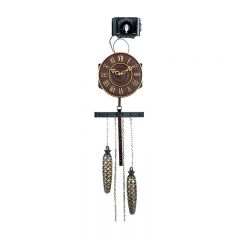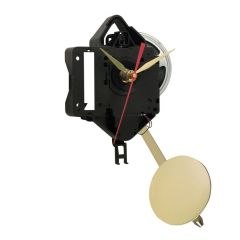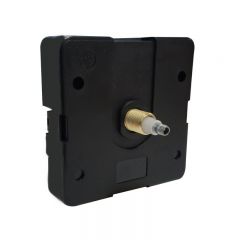We all know that when someone says something is running like clockwork, they are referring to the precision accuracy of quartz clock movements or clock mechanisms just like ones we have for sale at Klockit. Choose from quartz clock movements like time-only, chiming and pendulum, to atomic clock movements and other specialty clock movements.
Also check out our selection of Quartz Movement Accessories.
- Q-80 Quartz Clock Movement, 11/16" Maximum Dial ThicknessRegular Price $10.49 $6.50SKU: 10004-bundleQuickview
- Push-On Quartz Clock Movement, Threaded, 1/16" Maximum Dial ThicknessRegular Price $10.49 $6.50SKU: 10051-bundleQuickview
- Q-80 Quartz Clock Movement, 3/16" Maximum Dial ThicknessRegular Price $10.49 $6.50SKU: 10002-bundleQuickview
- Q-80 Quartz Clock Movement, 1/16" Maximum Dial ThicknessRegular Price $10.49 $6.50SKU: 10043-bundleQuickview
- Q-80 Quartz Clock Movement, 5/16" Maximum Dial ThicknessRegular Price $10.49 $6.50SKU: 10082-bundleQuickview
- Push-On Quartz Clock Movement, Threaded, 3/16" Maximum Dial ThicknessRegular Price $10.49 $6.50SKU: 10052-bundleQuickview
- Q-80 Quartz Clock Movement, 7/16" Maximum Dial ThicknessRegular Price $10.49 $6.50SKU: 10003-bundleQuickview
- Bim-Bam Mechanical Strike Quartz Clock Movement$105.99SKU: bim-bam-mechanical-strike-quartz-clock-movementQuickview
- High Torque Quartz Clock Movement with C Cell Power, 3/4" Maximum Dial ThicknessAs low as $20.62SKU: 10161-bundleQuickview
- Quartex Q-80 Quartz Clock MovementRegular Price $10.49 $6.50SKU: quartex-q80-quartz-clock-movement-bundleQuickview
- Quartex 24-Hour High Torque Quartz Clock Movement, 3/16" Max Dial Thickness, 5/8" Hand Shaft LengthAs low as $21.74SKU: 10107-bundleQuickview
- Continuous Sweep Quartz Clock Movement, 1/4" Maximum Dial ThicknessAs low as $11.89SKU: 10907-bundleQuickview
- Continuous Sweep Quartz Clock Movement, 3/8" Maximum Dial ThicknessAs low as $11.54SKU: 10908-bundleQuickview
- Quartex High Torque Quartz Clock MovementAs low as $12.37SKU: quartex-high-torque-clock-movementQuickview
- High Torque Quartz Clock Movement, 3/16" Maximum Dial ThicknessAs low as $12.37SKU: 10114-bundleQuickview
- High Torque Quartz Clock Movement, 11/16" Maximum Dial ThicknessAs low as $12.37SKU: 10115-bundleQuickview
- Quartex High Torque Set & Forget Extended Life Quartz Clock Movement, 3/16" Max Dial ThicknessAs low as $16.19SKU: 14161-bundleQuickview
- Quartex Push-On Quartz Clock Movement, Non-Threaded$11.99SKU: quartex-push-on-clock-movement-no-threaded-shaftQuickview
- Quartex Push-On Quartz Clock Movement, ThreadedAs low as $7.87SKU: quartex-push-on-clock-movement-threaded-shaftQuickview
- Quartex Reverse Time Quartz Clock Movement, 3/16" Maximum Dial ThicknessRegular Price $17.49 $6.50SKU: 10035-bundleQuickview
- Quartex Set & Forget Quartz Clock MovementAs low as $15.74SKU: quartex-set-forget-quartz-clock-movementQuickview
- Seiko Dual-Chime Quartz Pendulum Clock Movement$70.99SKU: seiko-dual-chime-quartz-clock-movement-bundleQuickview
Frequently Asked Questions
The thickness of the clock face that the threaded length of the movement shaft travels through.
Battery-operated movement that sends an electrical signal to the quartz crystal. The quartz crystal creates a precise frequency enabling the quartz movement to keep time.
Yes, you can add spacers such as washers or cardboard in the back to adjust the thickness.
Due to inconsistencies between manufacturers, we cannot cross-reference names or numbers printed on quartz movements. All replacements are based on measurements obtained by the customer.
A quartz movement is a battery operated clock motor.
In 1880, Jaques and Pierre Curie discovered the piezoelectric properties that would later be used in quartz movements. More than four decades later, in 1921, Walter G. Cady built the first crystal oscillator. An oscillator is a circuit that uses mechanical resonance of a vibrating crystal of piezoelectric material to create an electric signal with constant frequency. Without the discovery of piezoelectric and the invention of the crystal oscillator, we would not have the timepieces we have today. The world's first quartz movement was invented in 1927 by Warren Marrison and J.W. Horton.
Some do, and some do not. If you would like a silent quartz movement, you will want to use one that states "Continuous Sweep".
The battery sends an electrical current through the quartz crystal. The current creates a vibration with constant frequency. This frequency enables the ability to keep time.


